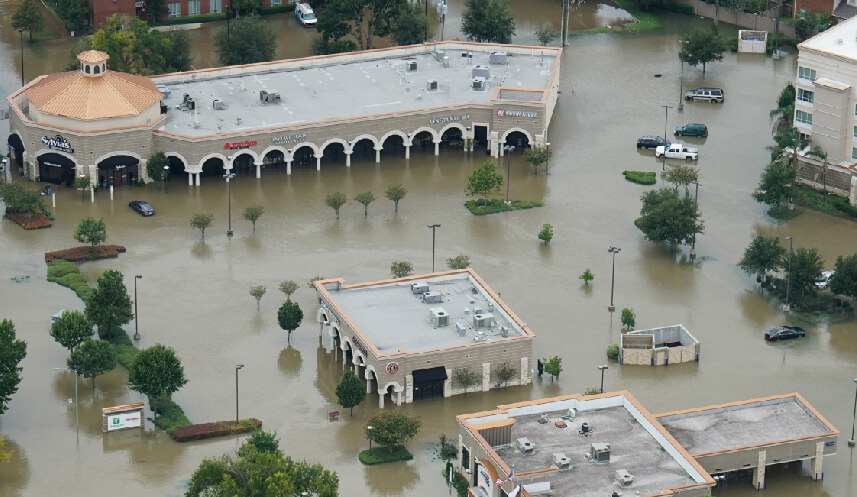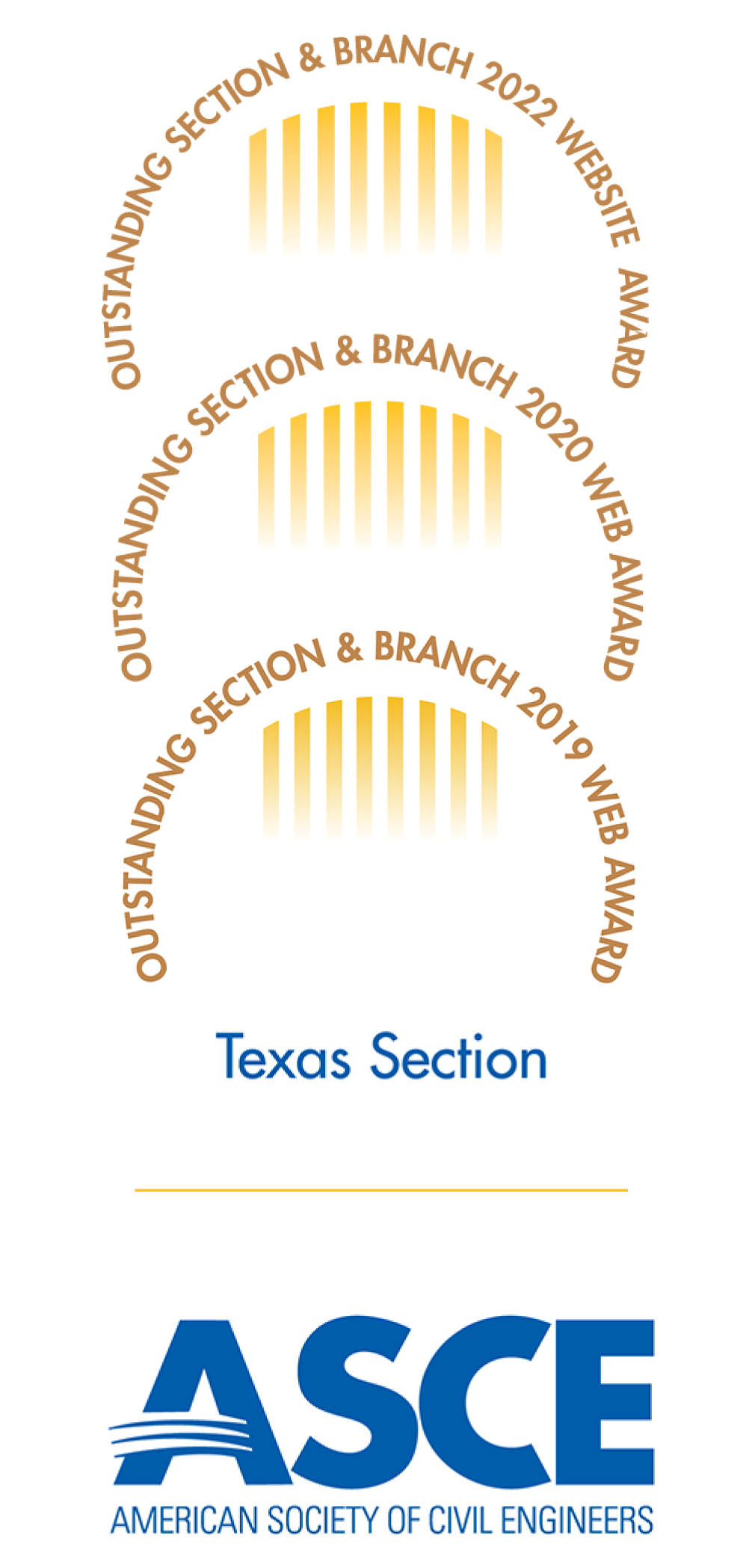It’s hard to believe that the one-year anniversary of Hurricane Harvey just pasted.
Like yesterday, I can remember sitting in the break room at the Port of Port Arthur a couple days before the storm, talking to the assistant terminal superintendent about the possibility of 15 inches of rain. He replied that, “Gregg Bostwick at KFDM is predicting as much as 35 inches, and he’s always right! Whatever it is, we sure are fixin’ for some rain.” And were we ever. Where I lived in Port Arthur, we received nearly 60 inches of rain and I know many other areas around Houston saw similar totals.
Gregg Bostwick at KFDM is predicting as much as 35 inches, and he’s always right! Whatever it is, we sure are fixin’ for some rain
Over the last year, the topic of flood risk management has been a point of emphasis across Texas.
As many of you are aware, the Texas Section has recently released a report, entitled Addressing Flood Risk: Path Forward for Texas After Hurricane Harvey, which outlines 27 recommendations for improved flood risk management in Texas. This is the culmination of an eight-month long effort to provide the Texas public and policy makers with a vision for improved flood risk management as well as to equip the public with knowledge about the flood risk management process. Additionally, it is our hope that this document will be used for ASCE advocacy efforts in the future.
In the 2017 Report Card for Texas’ Infrastructure, ASCE Texas Section graded the State’s overall flood control infrastructure a “D.” This grade does not reflect the quality or adequacy of any individual local government’s facilities, but is rather an overall statewide grade. To improve this grade, civil engineers made several recommendations to lawmakers and the public, including increasing funding for flood control infrastructure, flood warning systems, flood risk mapping, and enhancing state involvement in these programs.
The issues identified in the 2017 Report Card for Texas’ Infrastructure were highlighted when Hurricane Harvey made landfall. While completely eliminating the risk from extreme storm events such as Hurricane Harvey is impossible, communities across the State can reduce risks associated with larger storms, reduce their impacts, and improve recovery capabilities. Our recommendations for a path forward after Hurricane Harvey include:
DEVLEOP A STATEWIDE FLOOD MITIGATION PLAN
The Texas Water Development Board should develop & regularly update a statewide flood mitigation plan, with input from all levels of government, citizens & the private sector.
EDUCATE CITIZENS ABOUT RISK
Entities with authority over floodplain management should collaborate to implement a public outreach program to educate the general Texas population about flood risk management & preparedness, including the roles of public agencies during emergency conditions.
FUND DAM SAFETY
The state should provide additional funding for Texas’s Dam Safety Program as well as a funding program for dam improvements.
EMPLOY ALTERNATIVE FLOOD MITIGATION STRATEGIES
Continue to invest in the development & deployment of alternative flood mitigation strategies, including green stormwater infrastructure (also known as “low impact development”).
IMPLEMENT A STATEWIDE LEVEE SAFETY PROGRAM
The Texas Commission on Environmental Quality should develop & implement a program for inventorying the condition of all levees in Texas.
FOCUS ON A WATERSHED APPROACH
Communities should take a watershed approach to flood risk management.
The idea for this report began at last November’s ASCE Southeast Texas Branch Board of Directors Meeting.
As we discussed some of Judge Emmett’s recommendations for Harris County, we wanted to participate in a similar discussion in our own communities based on our personal and professional experience. As it turned out, so did so did the Houston Branch and other engineers from across the State. Today our committee, listed below, includes members from local Branches, Texas Institute Chapters, and the Section’s Government Affairs and Infrastructure Report Card Committees. They are from the Beaumont, Houston, Austin, and Dallas Fort Worth areas.
COMMITTEE MEMBERS:
ASSISTANCE ALSO PROVIDED BY:
I cannot speak highly enough of the individuals on this committee and their dedication to creating a quality document.
Originally, we planned to write a four- to fivepage report that would be completed in May; however, it was clear after the first couple of months that a longer report would be necessary to appropriately address each topic. With a deadline of Harvey’s anniversary, the committee worked full steam ahead through the summer despite high workloads and family vacations.
In addition to the report, the committee also organized two events—one during Infrastructure Week in May and another last month in Houston—which, combined, drew over 250 people. Through our stakeholder review, in which we asked approximately 25 agencies and organizations to comment on our draft recommendations, we were also able to engage decision makers and further develop critical relationships with community leaders.
While the task committee has completed its goal of writing a report that gives recommendations for improved flood risk management, the task of advocating for change has only just begun. Since the report’s release it has been the topic of several articles and television news stories. The Houston Business Journal, Houston Public Media, and Univision 45 Houston have all taken note of the report. We hope that you will join us as we continue to engage our communities and elected officials at the local, State, and Federal levels.
Several committee members will be hosting a breakout session at CECON to further discuss our report. We hope to see you there!
Andrew Wells is the Chairman of the Task Committee on Post-Hurricane Harvey Recommendations. During Hurricane Harvey, he lived in Port Arthur, Texas while overseeing several construction projects at the Port of Port Arthur. Andrew recently took a new position in the Bridge Design Section of the Alaska Department of Transportation and Public Facilities. The remarks made in this article are his own and do not reflect the views or opinions of the Alaska DOT&PF.
Share this story:











